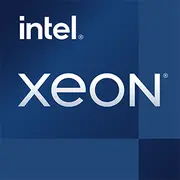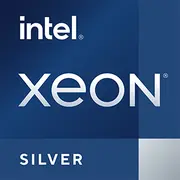Intel Xeon E5-2637 v2 vs Intel Xeon Silver 4112
CPU-Vergleichsergebnis
Nachfolgend finden Sie die Ergebnisse eines Vergleichs von
Intel Xeon E5-2637 v2
und
Intel Xeon Silver 4112
Prozessoren basierend auf wichtigen Leistungsmerkmalen sowie Stromverbrauch und vielem mehr.
Vorteile
- Höher Herstellungsprozess: 14 nm (22 nm vs 14 nm)
- Höher Speichertypen: DDR4-2400 (DDR3 vs DDR4-2400)
- Neuer Erscheinungsdatum: July 2017 (September 2013 vs July 2017)
Basic
Intel
Markenname
Intel
September 2013
Erscheinungsdatum
July 2017
Server
Plattform
Server
Xeon E5-2637 v2
Modellname
?
Die Anzahl der Intel-Prozessoren ist neben der Prozessormarke, den Systemkonfigurationen und Benchmarks auf Systemebene nur einer von mehreren Faktoren, die bei der Auswahl des richtigen Prozessors für Ihre Computeranforderungen berücksichtigt werden müssen.
4112
Ivy Bridge-EP
Kernarchitektur
SkyLake
Intel
Schmelzerei
-
Xeon E5 (Ivy Bridge-EP)
Generation
-
CPU-Spezifikationen
4
Gesamtzahl der Kerne
?
Kerne ist ein Hardwarebegriff, der die Anzahl unabhängiger Zentraleinheiten in einer einzelnen Computerkomponente (Chip oder Chip) beschreibt.
4
8
Gesamtzahl der Threads
?
Wo zutreffend, ist die Intel® Hyper-Threading-Technologie nur auf Performance-Kernen verfügbar.
8
-
Grundfrequenz
2.60 GHz
-
Maximale Turbofrequenz
?
Die maximale Turbofrequenz ist die maximale Single-Core-Frequenz, mit der der Prozessor mit Intel® Turbo Boost-Technologie und, falls vorhanden, Intel® Turbo Boost Max Technology 3.0 und Intel® Thermal Velocity Boost arbeiten kann. Die Frequenz wird typischerweise in Gigahertz (GHz) oder Milliarden Zyklen pro Sekunde gemessen.
3.00 GHz
3.5 GHz
Performance-Kern-Basistaktung
-
-
Intel Turbo Boost Technology
?
Intel® Turbo Boost Technology dynamically increases the processor's frequency as needed by taking advantage of thermal and power headroom to give you a burst of speed when you need it, and increased energy efficiency when you don’t.
2.0
-
Intel Hyper-Threading Technology
?
Intel® Hyper-Threading Technology (Intel® HT Technology) delivers two processing threads per physical core. Highly threaded applications can get more work done in parallel, completing tasks sooner.
Yes
-
Intel Turbo Boost Max Technology 3.0
?
Intel® Turbo Boost Max Technology 3.0 identifies the best performing core(s) on a processor and provides increased performance on those cores through increasing frequency as needed by taking advantage of power and thermal headroom.
No
64K per core
L1-Cache
-
256K per core
L2-Cache
-
10MB shared
L3-Cache
-
Intel Socket 2011
Sockel
?
Der Sockel ist die Komponente, die die mechanischen und elektrischen Verbindungen zwischen Prozessor und Motherboard herstellt.
FCLGA3647
No
Freigeschalteter Multiplikator
-
100MHz
Bus-Frequenz
-
35.0
Multiplikator
-
22 nm
Herstellungsprozess
?
Lithographie bezieht sich auf die Halbleitertechnologie, die zur Herstellung eines integrierten Schaltkreises verwendet wird, und wird in Nanometern (nm) angegeben, was die Größe der auf dem Halbleiter aufgebauten Strukturen angibt.
14 nm
130 W
Thermal Design Power (TDP)
85 W
3
PCIe-Version
?
PCI Express ist ein Hochgeschwindigkeits-Serial-Computer-Erweiterungsbusstandard, der zum Anschluss von Hochgeschwindigkeitskomponenten verwendet wird und ältere Standards wie AGP, PCI und PCI-X ersetzt. Seit seiner ersten Einführung im Jahr 2002 hat es mehrere Überarbeitungen und Verbesserungen durchlaufen. PCIe 1.0 wurde erstmals eingeführt, und um der wachsenden Nachfrage nach höherer Bandbreite gerecht zu werden, wurden im Laufe der Zeit nachfolgende Versionen veröffentlicht.
-
-
PCI-Express-Version
?
PCI Express Revision ist die unterstützte Version des PCI Express-Standards. Peripheral Component Interconnect Express (oder PCIe) ist ein Hochgeschwindigkeitsstandard für serielle Computererweiterungsbusse zum Anschließen von Hardwaregeräten an einen Computer. Die verschiedenen PCI-Express-Versionen unterstützen unterschiedliche Datenraten.
3.0
-
Anzahl der PCI-Express-Lanes
?
Eine PCI Express (PCIe)-Lane besteht aus zwei differenziellen Signalpaaren, eines zum Empfangen von Daten, eines zum Senden von Daten, und ist die Grundeinheit des PCIe-Busses. Max. Anzahl der PCI Express-Lanes ist die Gesamtzahl der unterstützten Lanes.
48
-
Intel 64
?
Intel® 64 architecture delivers 64-bit computing on server, workstation, desktop and mobile platforms when combined with supporting software.¹ Intel 64 architecture improves performance by allowing systems to address more than 4 GB of both virtual and physical memory.
Yes
1.4 billions
Transistoren
-
Speicherspezifikationen
DDR3
Speichertypen
?
Intel®-Prozessoren gibt es in vier verschiedenen Typen: Single Channel, Dual Channel, Triple Channel und Flex Mode. Die maximal unterstützte Speichergeschwindigkeit kann niedriger sein, wenn bei Produkten, die mehrere Speicherkanäle unterstützen, mehrere DIMMs pro Kanal bestückt werden.
DDR4-2400
-
Maximale Speichergröße
?
Die maximale Speichergröße bezieht sich auf die maximale vom Prozessor unterstützte Speicherkapazität.
768 GB
4
Maximale Anzahl an Speicherkanälen
?
Die Anzahl der Speicherkanäle bezieht sich auf den Bandbreitenbetrieb für reale Anwendungen.
6
-
Maximum Memory Speed
2400 MHz
-
ECC Memory Supported
?
ECC Memory Supported indicates processor support for Error-Correcting Code memory. ECC memory is a type of system memory that can detect and correct common kinds of internal data corruption. Note that ECC memory support requires both processor and chipset support.
Yes
Yes
ECC-Unterstützung
-
GPU-Spezifikationen
N/A
Integrierte GPU
?
Eine integrierte GPU bezieht sich auf den Grafikkern, der in den CPU-Prozessor integriert ist. Durch die Nutzung der leistungsstarken Rechenfähigkeiten und intelligenten Energieeffizienzverwaltung des Prozessors bietet sie eine hervorragende Grafikleistung und ein flüssiges Anwendungserlebnis bei geringerem Stromverbrauch.
-
Verschiedenes
-
Intel Virtualization Technology for Directed I/O (VT-d)
?
Intel® Virtualization Technology for Directed I/O (VT-d) continues from the existing support for IA-32 (VT-x) and Itanium® processor (VT-i) virtualization adding new support for I/O-device virtualization. Intel VT-d can help end users improve security and reliability of the systems and also improve performance of I/O devices in virtualized environments.
Yes
-
Intel Virtualization Technology (VT-x)
?
Intel® Virtualization Technology (VT-x) allows one hardware platform to function as multiple “virtual” platforms. It offers improved manageability by limiting downtime and maintaining productivity by isolating computing activities into separate partitions.
Yes
-
Intel Standard Manageability (ISM)
?
Intel® Standard Manageability is the manageability solution for Intel vPro® Essentials platforms and is a subset of Intel® AMT with out-of-band management over Ethernet and Wi-Fi, but no KVM or new life cycle management features.
Intel® SSE4.2 | Intel® AVX | Intel® AVX2 | Intel® AVX-512
-
Number of AVX-512 FMA Units
1
-
Enhanced Intel SpeedStep Technology
?
Enhanced Intel SpeedStep® Technology is an advanced means of enabling high performance while meeting the power-conservation needs of mobile systems. Conventional Intel SpeedStep® Technology switches both voltage and frequency in tandem between high and low levels in response to processor load. Enhanced Intel SpeedStep® Technology builds upon that architecture using design strategies such as Separation between Voltage and Frequency Changes, and Clock Partitioning and Recovery.
Yes
-
Execute Disable Bit
?
Execute Disable Bit is a hardware-based security feature that can reduce exposure to viruses and malicious-code attacks and prevent harmful software from executing and propagating on the server or network.
Yes
-
Cache
?
CPU Cache is an area of fast memory located on the processor. Intel® Smart Cache refers to the architecture that allows all cores to dynamically share access to the last level cache.
8.25 MB L3 Cache
-
Intel AES New Instructions
?
Intel® AES New Instructions (Intel® AES-NI) are a set of instructions that enable fast and secure data encryption and decryption. AES-NI are valuable for a wide range of cryptographic applications, for example: applications that perform bulk encryption/decryption, authentication, random number generation, and authenticated encryption.
Yes
-
Intel Volume Management Device (VMD)
?
Intel® Volume Management Device (VMD) provides a common, robust method of hot plug and LED management for NVMe-based solid state drives.
Yes
-
Intel VT-x with Extended Page Tables (EPT)
?
Intel® VT-x with Extended Page Tables (EPT), also known as Second Level Address Translation (SLAT), provides acceleration for memory intensive virtualized applications. Extended Page Tables in Intel® Virtualization Technology platforms reduces the memory and power overhead costs and increases battery life through hardware optimization of page table management.
Yes
Benchmarks
Geekbench 6 Einzelkern
Xeon E5-2637 v2
639
Xeon Silver 4112
944
+48%
Geekbench 6 Mehrkern
Xeon E5-2637 v2
2336
Xeon Silver 4112
3824
+64%
Geekbench 5 Einzelkern
Xeon E5-2637 v2
741
+8%
Xeon Silver 4112
686
Geekbench 5 Mehrkern
Xeon E5-2637 v2
4539
+35%
Xeon Silver 4112
3368
Passmark CPU Einzelkern
Xeon E5-2637 v2
1882
+10%
Xeon Silver 4112
1707
Passmark CPU Mehrkern
Xeon E5-2637 v2
6413
Xeon Silver 4112
6446
+1%


